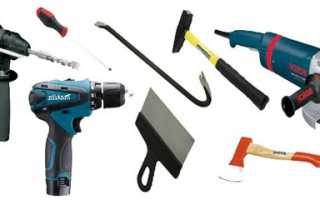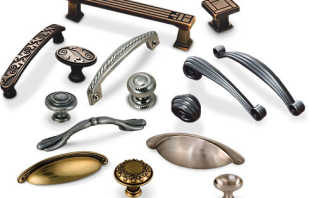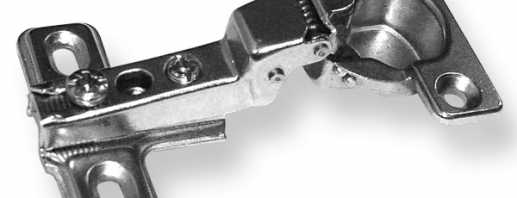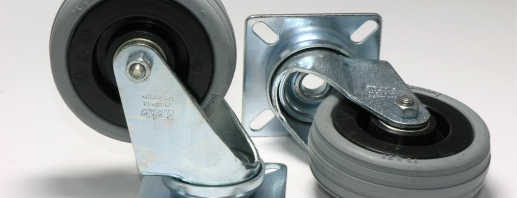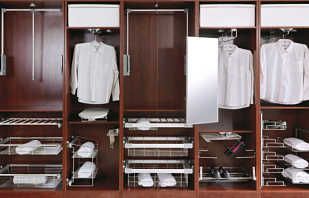Steps for installing furniture hinges, marking and fastening
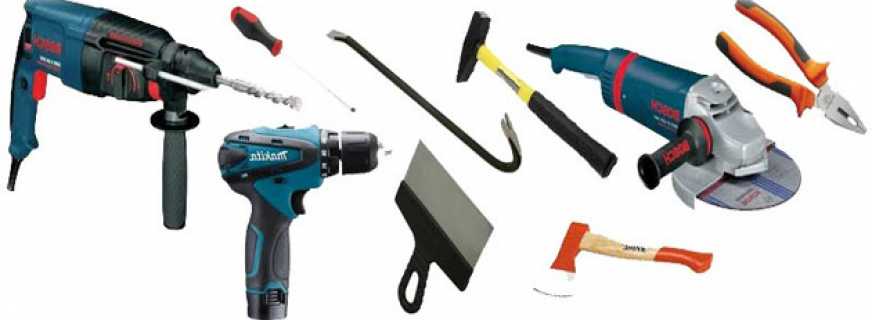
Many furniture is equipped with doors. The correct location of the hinges implies convenient use and a long service life of the door. Sometimes it happens that the door does not open well or mows a little. Such moments cause unpleasant emotions when using the cabinet. Therefore, it is worth paying more attention and more seriously to the fact that when furniture hinges are mounted, the layout must be carried out taking into account all the rules.
Materials and Tools
Do-it-yourself hinge installation begins with the analysis of the part itself. In the manufacture of furniture used various hinges on the cabinet. The most popular loops are overhead. They are used when attaching facades to the body. There are also semi-laid, internal, angular, using a closer and spring. In more detail the question will be considered how to install furniture hinges of a laid on look. In particular, the well-known four-hinged model. The sizes of such loops are different. The most common with a diameter of 35 mm. The structure of the canopy includes such parts:
- a cup;
- mounting plate;
- shoulder.
The cup is attached to the facade, and the mounting plate is attached to the cabinet body. The shoulder is involved in the bridge connection of these two elements. To correctly install furniture hinges with your own hands, you need to prepare the following tools and materials:
- screwdriver;
- drill;
- ruler;
- construction level;
- milling cutter;
- pencil;
- screwdriver;
- wood screws.
The diameter of the cutter is 35 mm. When all the tools and materials are ready, the next stage begins.
Markup
Do-it-yourself installation of furniture hinges involves precise marking. By making poor markings, you can get flaws when opening the door. The process of marking under furniture hinges involves finding the center of the hole under them. You should step back 7-12 cm from the edge of the facade. The number of hinges installed on the door may vary. But you need to observe a certain distance between the canopies, equal to 50 cm. There is a certain dependence of the number of canopies on the door parameters.
| Facade weight, kg | Facade length, cm | ||||
| Up to 50 | 50-100 | 100-150 | 150-200 | More than 200 | |
| Number of awnings | |||||
| 4-5 | 2 | ||||
| 6-9 | 2 | ||||
| 10-13 | 3 | ||||
| 14-18 | 5 | ||||
| More than 19 | 5 | ||||
When the number of canopies is determined, the central holes are marked relative to the width of the door. Moreover, the distance from the side of the door should be 2.1-2.2 cm. And it should also be borne in mind that the mount should not lie on the location of the shelves.
Thus, having measured the necessary distance from the top and bottom of the door, a mark is made. Further, observing the indentation relative to the width, the point of the future location is also marked. At the intersection of the measured marks, a notch should be made using a self-tapping screw or a nail. With a facade height of more than 100 cm, marks must be made every 50 cm.
Hole preparation
To understand how to properly install and hang the hinges, it is important to follow all the necessary steps. The next installation step is how to embed furniture hinges? Using a drill or screwdriver, you need to drill holes. In this case, you need to use a cutter. The facade is laid on a hard surface. Drilling is carried out at the place of marking.
Installation of the furniture hinge is subject to the following conditions:
- the hole depth is 12-13 mm. The insert should not be deeper to avoid cracks on the front of the door;
- the use of a ground milling cutter helps to eliminate chips or damage the facade surface;
- a drill or screwdriver should be vertical, corresponding to the axis of drilling, in order to avoid surface damage;
- Do not rush while drilling, otherwise the hole will be sloppy as a result.
After drilling for one hole, the following grooves are drilled. When all the holes have been made, the next step is to lay the loop cups in them.
Loop fastener
Loops are placed in the holes and, using a ruler or level, adjust their position relative to the height of the facade. Each canopy should be tightly touching the surface of the facade. If you do not adjust the position of the awnings, the door may assume an oblique position. When the loops are aligned, make marks for the screws. This can be done with a pencil or with the screw itself. Next, screw the furniture hinges to the door with a screwdriver.
Facade hanging
When the marking and installation of the furniture hinge is completed, the most difficult stage is the fastening of the installed door to the cabinet body. Door hanging progress:
- to mark the installation sites for mounting sites under the hinges;
- attaching a platform for fixing loops that are installed on the facade;
- hang the door to the side of the cabinet;
- connection of two parts of a loop;
- adjustment of the cabinet door relative to the cabinet using a screwdriver.
Hanging the door is best done on a flat surface. At the same time, the side of the cabinet on which the canopy plate is attached must be horizontal. This creates a certain convenience when trying on and screwing the facade to the sidewall. After screwing to the case, you can put the cabinet in a vertical position, and carry out adjustment relative to the case.
Adjustment
The final step in installing furniture awnings is regulation. After the door is attached to the body, it is necessary to make adjustment in three planes. Of course, you will have to unwind and tighten the screw several times, but a favorable outcome is ensured. Three planes are vertical, horizontal and relative to the depth of fixation:
- depth adjustment helps push the facade closer to the body or loosens. A screwdriver tightens the oval hole. This type of adjustment is widely used in rooms where floors have any irregularities;
- vertical adjustment helps to move the facade in a vertical position. Adjustment is made by twisting oval holes. After some time, the door may sag. Therefore, it is necessary to regulate the awnings sometimes;
- horizontal adjustment involves moving the door from left to right or vice versa. Its purpose is to avoid gaps between the door and the cabinet body. We apply this method even in rooms with uneven walls and floors.
The adjustment step can be carried out when the cabinet is not yet mounted. But, in order to immediately navigate the walls and the ceiling, it is best to hang the cabinet on the wall.
It turns out that to fasten the loop, you do not need to have special knowledge or skills. Installing a furniture loop is a snap. The main thing is that when installing the furniture loop, the markup and installation were made taking into account all the rules. This avoids the appearance of cracks on the facade, cracks between the body and the door, and friction when opening.Moreover, the work done by one’s own hands brings a lot of positive emotions.
Video

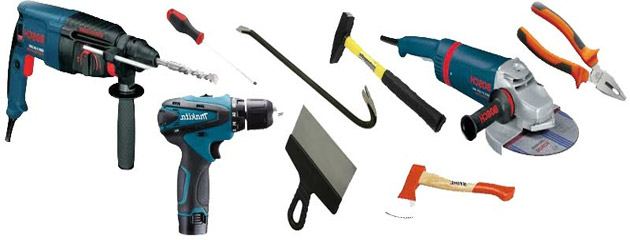
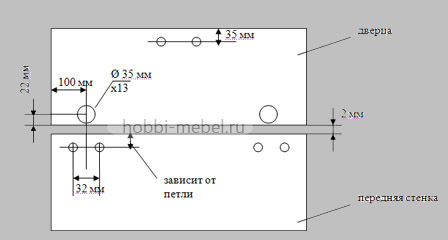
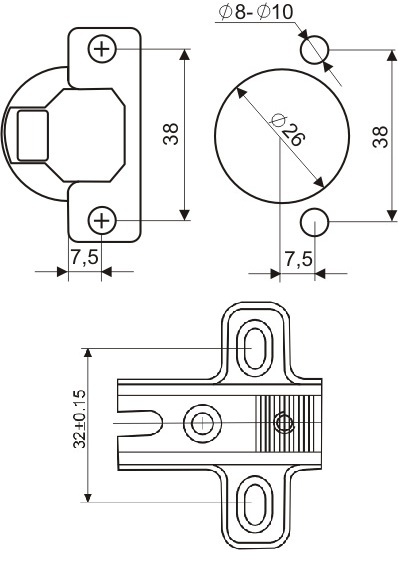
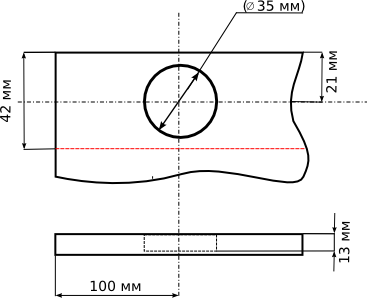

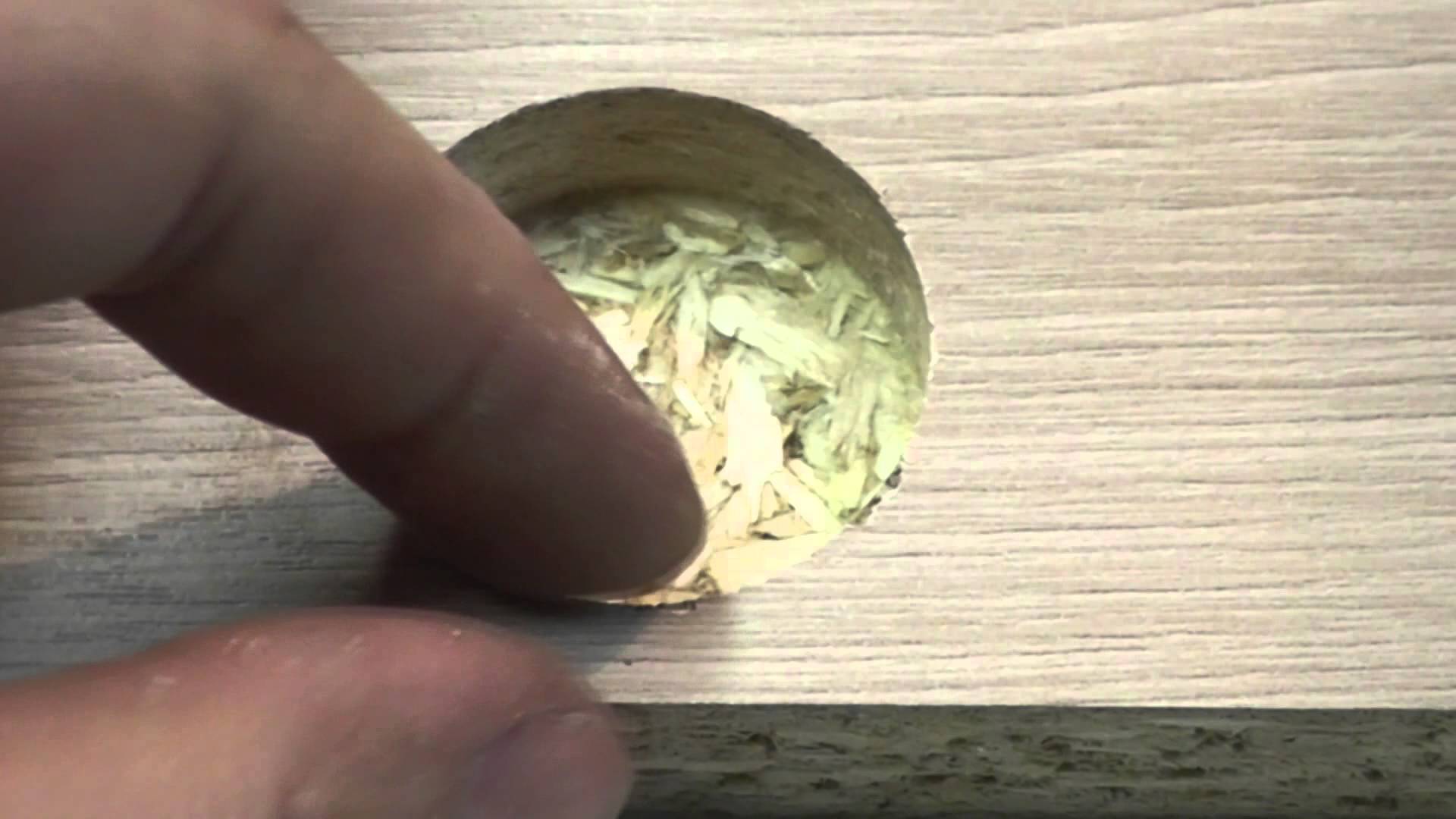

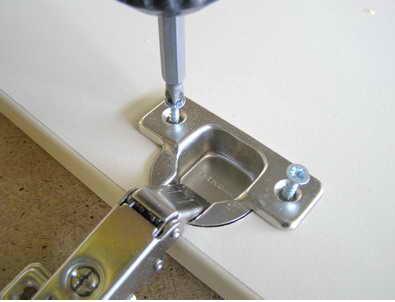
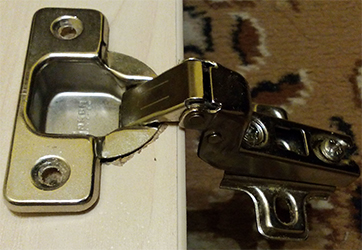
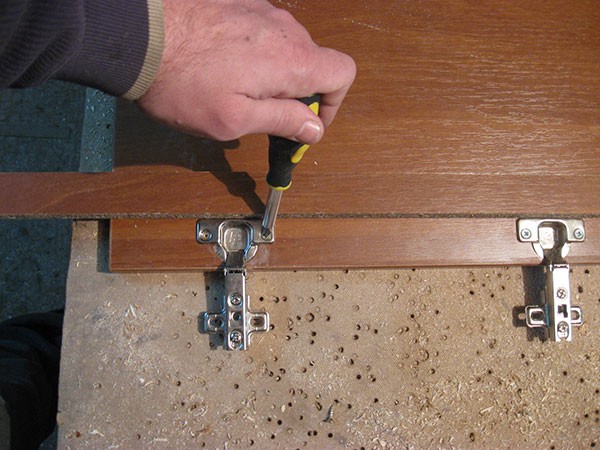
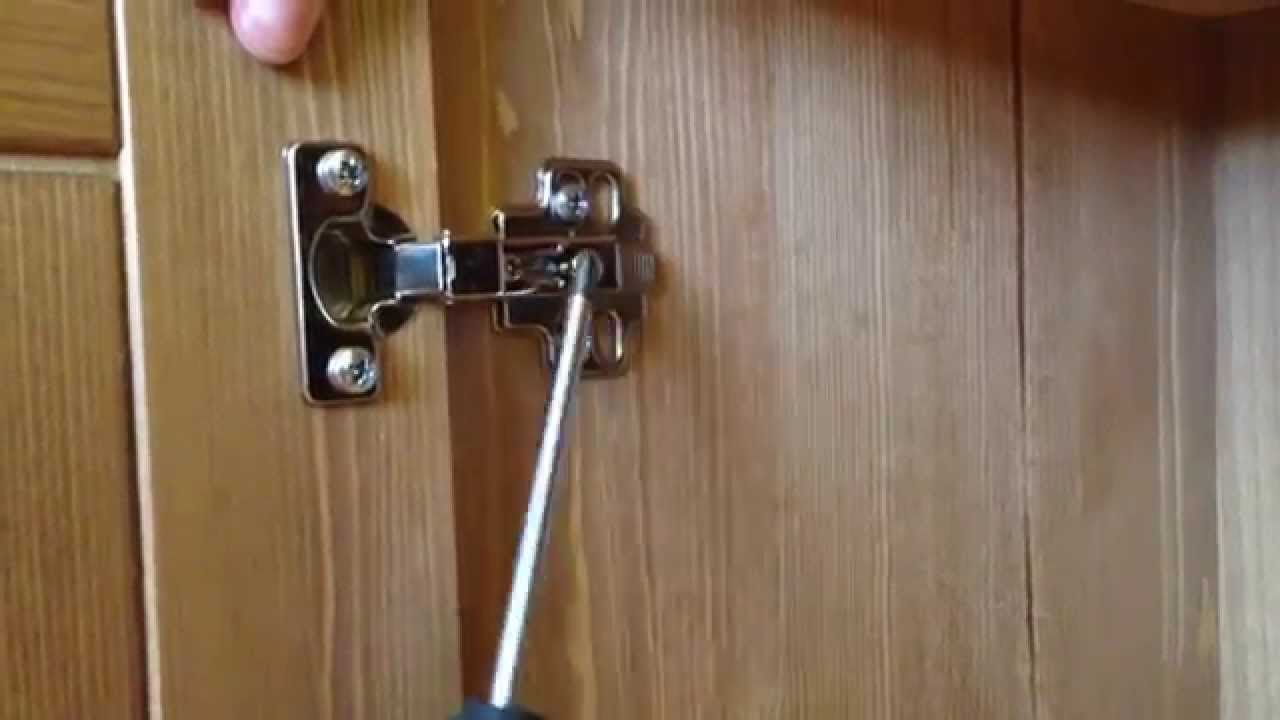
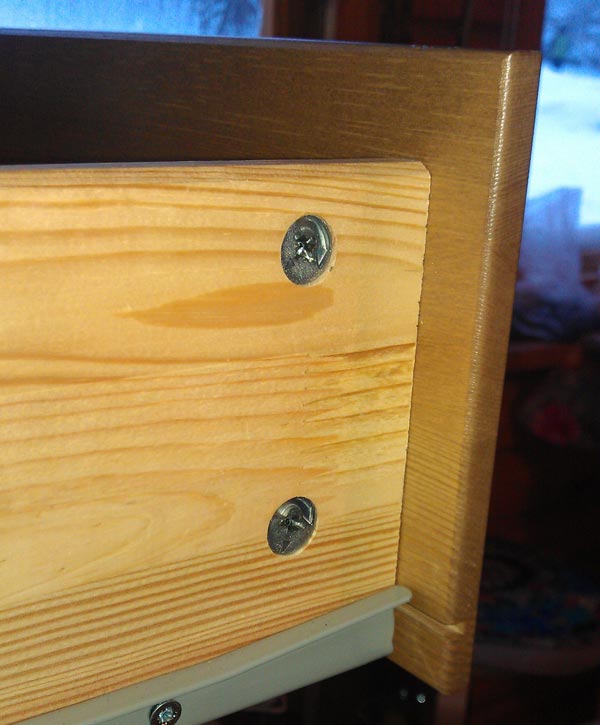
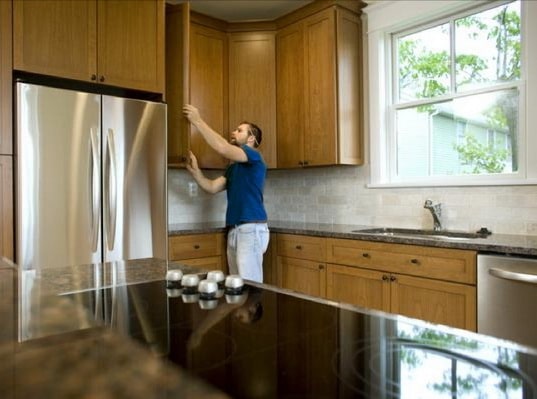

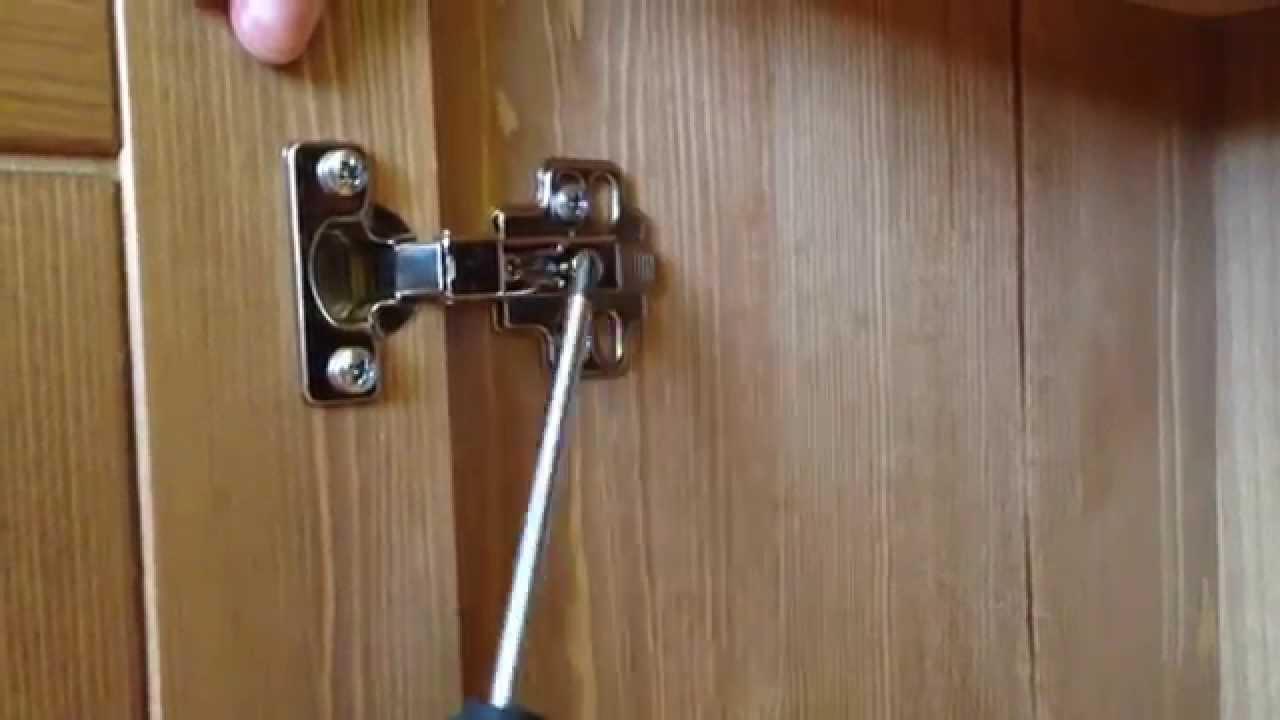
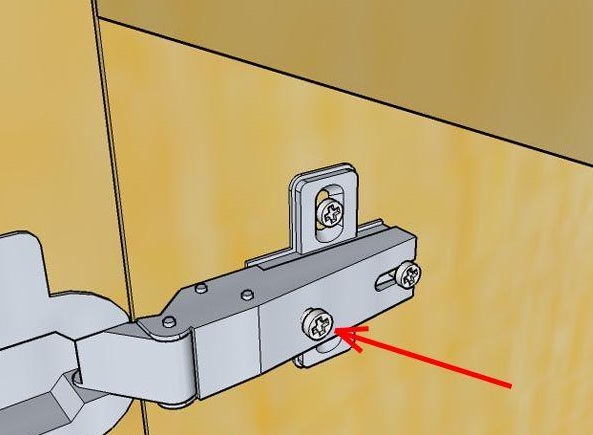

 (votes: 11, average rating: 4,00 out of 5)
(votes: 11, average rating: 4,00 out of 5)